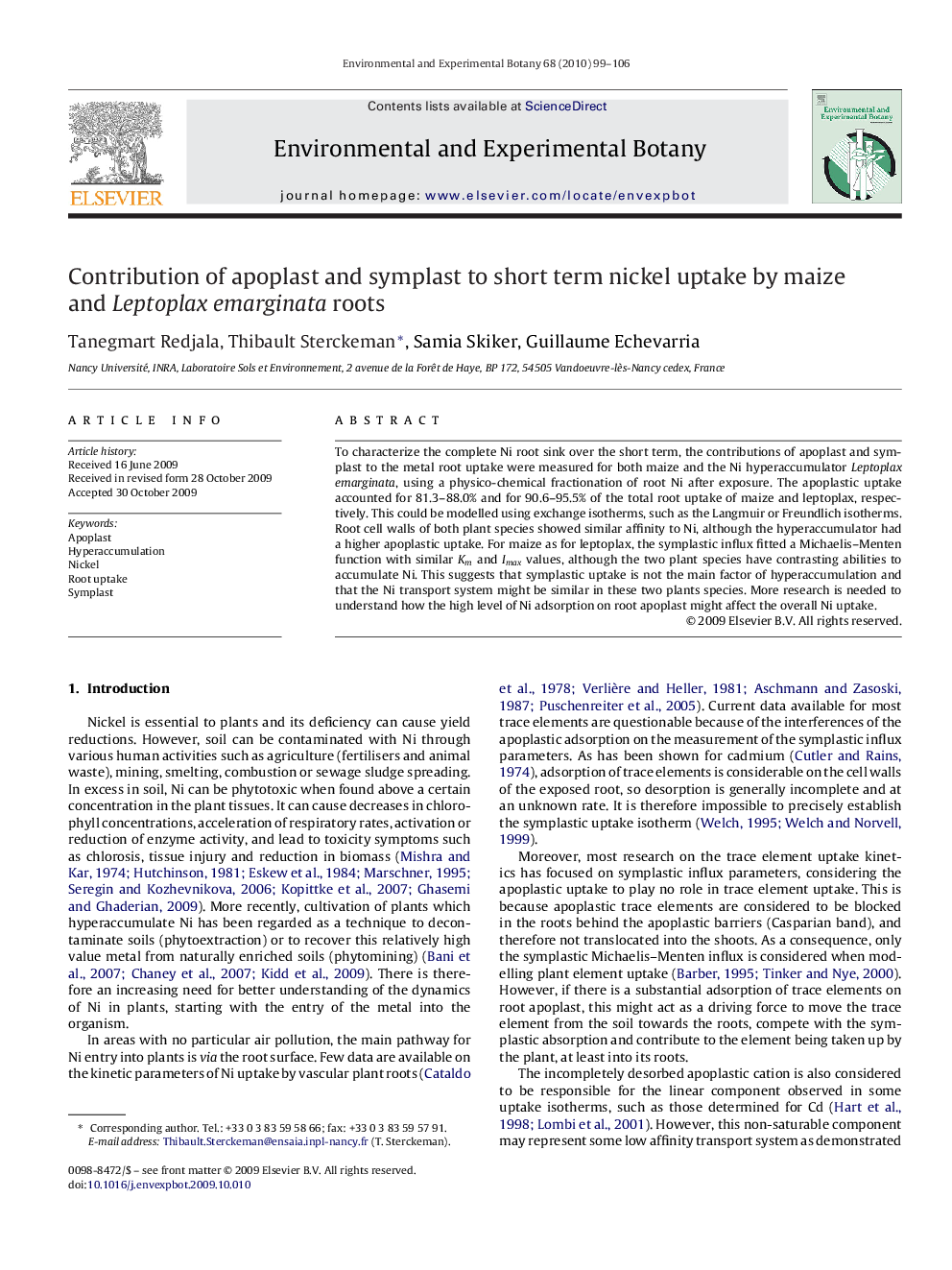| Article ID | Journal | Published Year | Pages | File Type |
|---|---|---|---|---|
| 4555022 | Environmental and Experimental Botany | 2010 | 8 Pages |
To characterize the complete Ni root sink over the short term, the contributions of apoplast and symplast to the metal root uptake were measured for both maize and the Ni hyperaccumulator Leptoplax emarginata, using a physico-chemical fractionation of root Ni after exposure. The apoplastic uptake accounted for 81.3–88.0% and for 90.6–95.5% of the total root uptake of maize and leptoplax, respectively. This could be modelled using exchange isotherms, such as the Langmuir or Freundlich isotherms. Root cell walls of both plant species showed similar affinity to Ni, although the hyperaccumulator had a higher apoplastic uptake. For maize as for leptoplax, the symplastic influx fitted a Michaelis–Menten function with similar Km and Imax values, although the two plant species have contrasting abilities to accumulate Ni. This suggests that symplastic uptake is not the main factor of hyperaccumulation and that the Ni transport system might be similar in these two plants species. More research is needed to understand how the high level of Ni adsorption on root apoplast might affect the overall Ni uptake.
